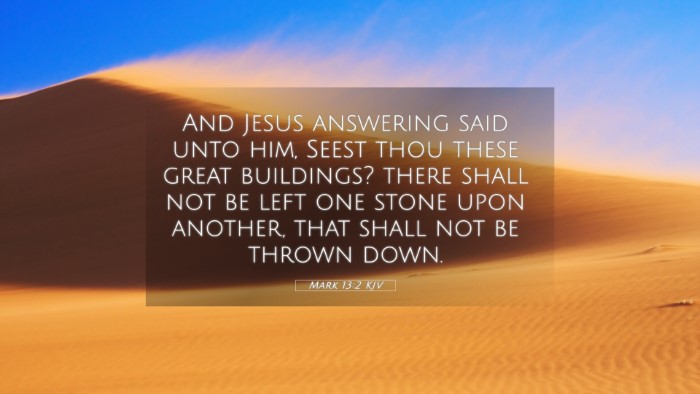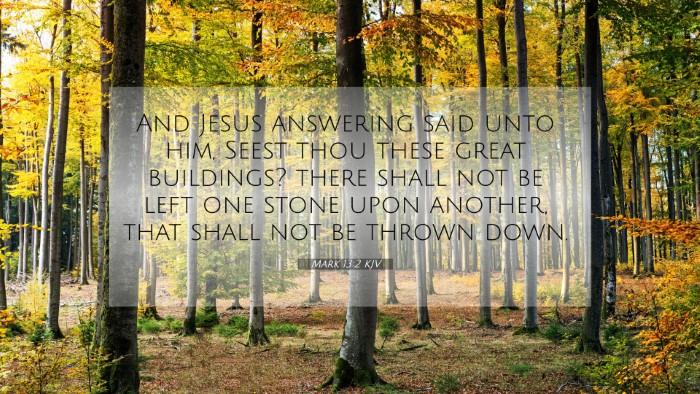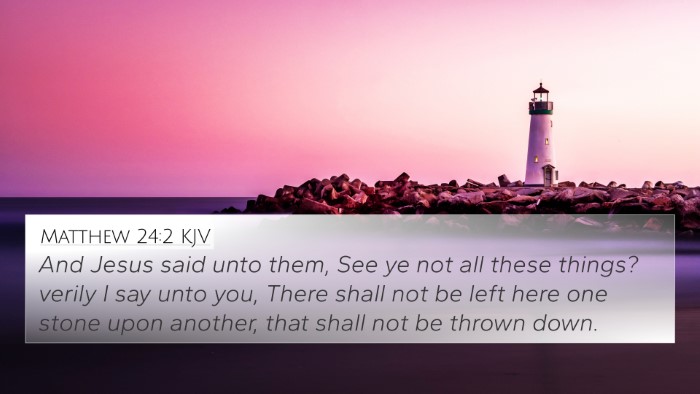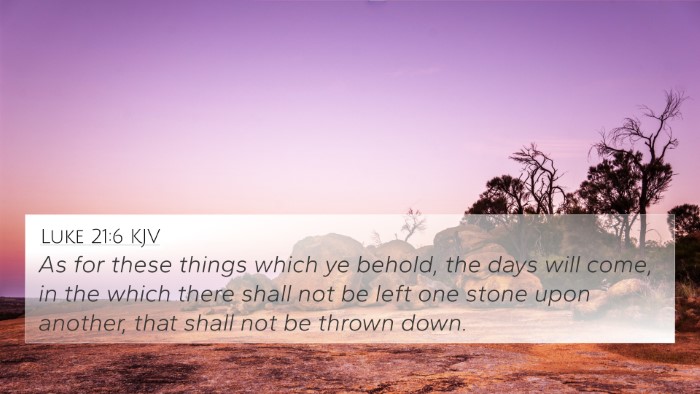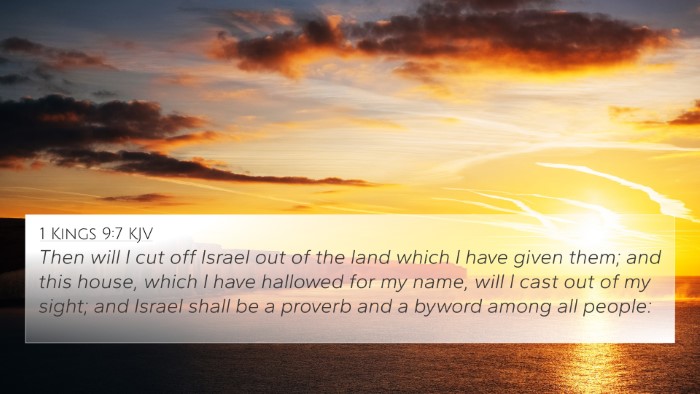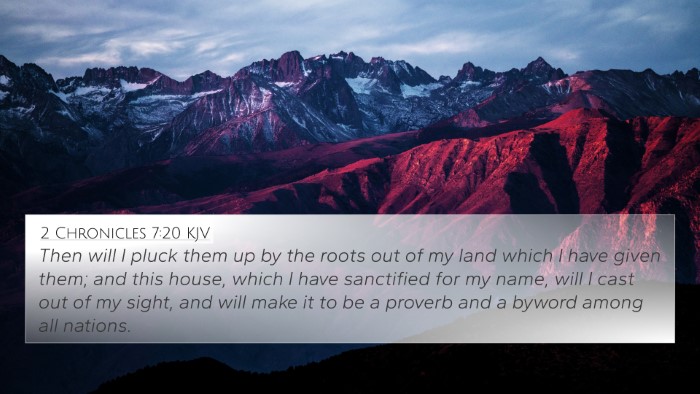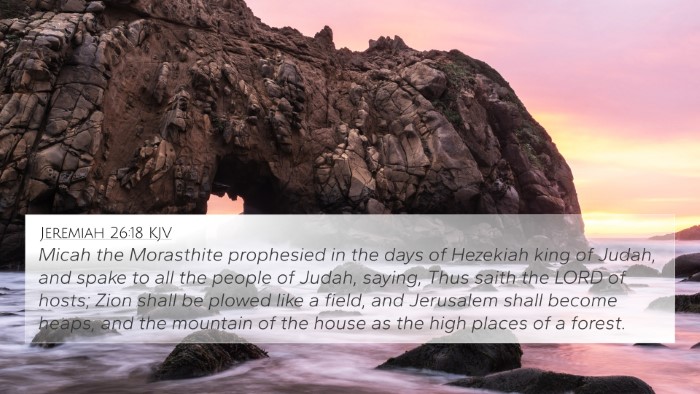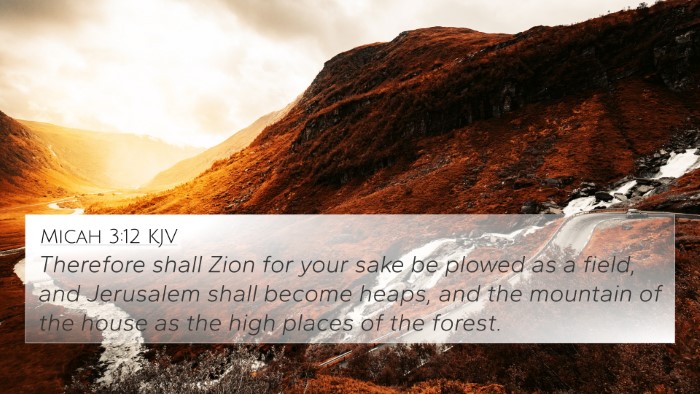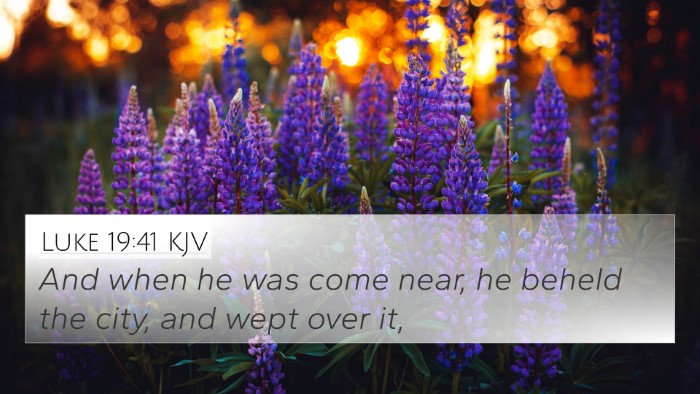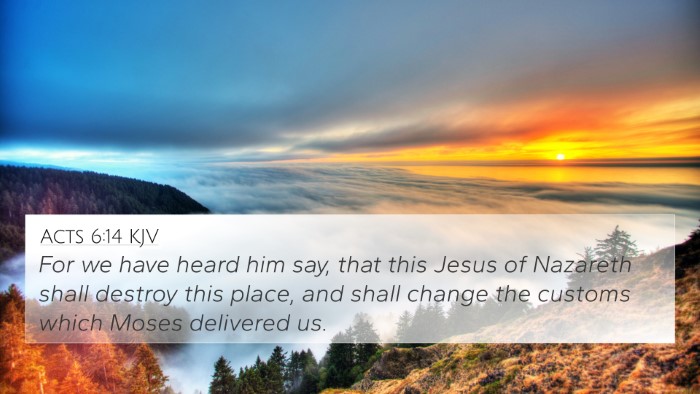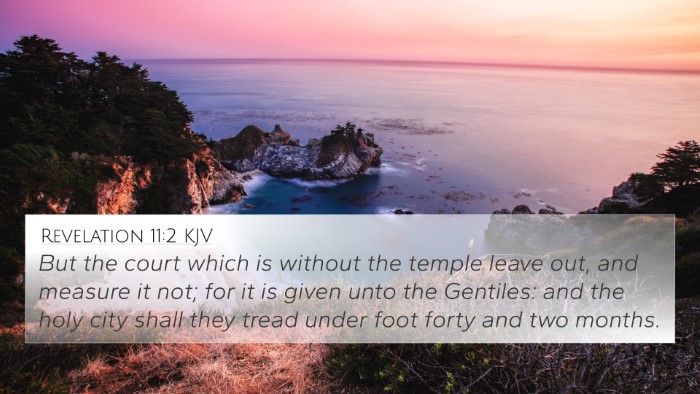Understanding Mark 13:2
Mark 13:2 states, "And Jesus answering said unto him, Seest thou these great buildings? there shall not be left one stone upon another, that shall not be thrown down." This verse is recorded in a context where the disciples marvel at the magnificence of the Temple in Jerusalem. Jesus' response, however, serves as a prophetic pronouncement of destruction.
Summary of Meaning: The verse captures a moment of deep significance where Jesus highlights the impermanence of earthly structures and the impending judgment that would come upon the Temple. This prophecy not only signifies the transient nature of physical edifices but also serves as a warning to recognize the superiority of spiritual over material wealth.
Insights from Commentaries
- Matthew Henry: Henry emphasizes the prophetic nature of Christ's words, indicating that the grandeur of the Temple, which seemed everlasting, would soon face destruction. He notes that Jesus uses this moment to illustrate the fleeting nature of worldly glory.
- Albert Barnes: Barnes discusses the literal fulfillment of this prophecy, noting that the Temple was indeed destroyed in AD 70. He outlines how this event serves as a testament to Christ's divine authority and foreknowledge.
- Adam Clarke: Clarke elaborates on the emotional weight behind Jesus' statement, suggesting it reveals not only the future physical destruction but also a spiritual lesson regarding reliance on material structures instead of faith in God.
Bible Cross-References
This verse has numerous connections within the Bible that enhance its understanding:
- Matthew 24:2: Jesus speaks similarly about the destruction of the Temple.
- Luke 21:6: A parallel account where Jesus talks about the dismantling of the Temple.
- Hebrews 13:14: Indicates that we seek a lasting city, hinting at the transience of earthly places.
- 1 Peter 1:24-25: Emphasizes the impermanence of flesh and human works compared to the enduring Word of God.
- Psalms 46:1-3: Offers assurance that despite upheaval (like the destruction of buildings), God remains our refuge and strength.
- Revelation 21:22: Highlights the absence of a physical temple in the new heaven and earth, pointing to the ultimate worship of God.
- Isaiah 40:6-8: Reinforces the idea that all flesh is grass and the glory thereof fades, echoing themes of impermanence.
Connections Between Bible Verses
The prophecy in Mark 13:2 aligns with broader Biblical themes regarding judgment, spiritual endurance, and the transient nature of earthly defaults. By examining the links between these scriptures, one can see the overarching narrative of God's sovereignty and the call for believers to focus on eternal truths rather than temporal realities.
Thematic Bible Verse Connections
Through thematic exploration, we can identify several important subjects that arise from this verse:
- Judgment: Seen in connections with various prophetic texts.
- Spiritual versus physical: Mark 13:2 invites reflection on the distinction between spiritual vitality and materialism.
- Faith amid destruction: Similar messages appear in passages conveying hope during trials.
- The Kingdom of God: Illustrates that the true kingdom is not bound to physical location.
Tools for Bible Cross-Referencing
To interpret and understand the relationships between various scriptures, it is useful to utilize:
- Bible Concordance: Helps readers find exact words and verses related to specific themes.
- Bible Cross-Reference Guide: A fantastic resource that links similar topics across different books of the Bible.
- Bible Chain References: Method for studying the Bible where readers can trace themes or events through connected verses.
Comparative Bible Verse Analysis
For deeper understanding, qualitative analysis of scripture surrounding Mark 13:2 can yield insights into:
- Context of prophetic announcements within both Old and New Testaments.
- Identifying parallels between Jesus’ teachings and the messages from the Prophets.
- How destruction serves as a motif for renewal within the biblical narrative.
Inter-Biblical Dialogue
Biblical cross-referencing fosters inter-Biblical dialogue, encouraging readers to:
- Identify connections between Old Testament prophecies and New Testament fulfillments.
- Enhance understanding of Jewish historical context as it relates to Jesus’ ministry.
- See the thread of redemption woven through scripture, uniting various texts and authorial voices.
Conclusion
Mark 13:2 invites its readers to contemplate the fleeting nature of material constructs in the light of God's eternal kingdom and purposes. By utilizing tools for cross-referencing and engaging with commentary insights, believers can deepen their understanding of this significant biblical text and its theological implications.

